A useful furniture element created in the last century - a wall - is in high demand in the modern world as well. For some it is a relic of the past, for others it is an irreplaceable thing in the interior design of the living room.
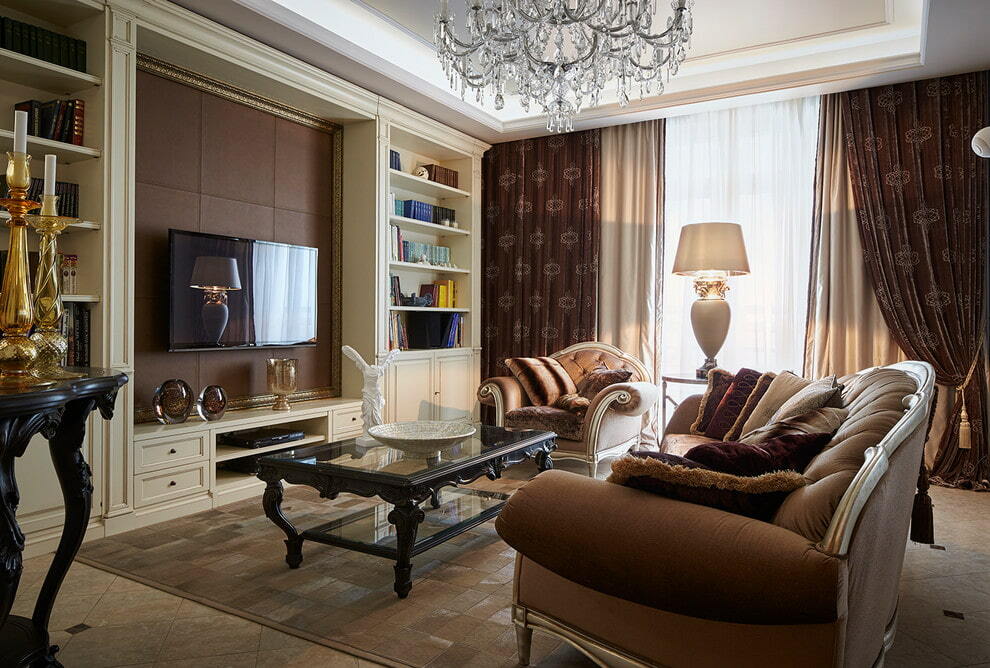
The living room is a showcase for each apartment.
Features of the composition: what to look for when choosing
Content
- Features of the composition: what to look for when choosing
- Varieties of walls
- The difference between the walls in terms of functionality
- The difference between the walls in terms of stylistic orientation
- Color solutions
- Selecting the wall size
- Manufacturing materials
- VIDEO: 60 examples of wall designs in the living room.
- 50 stylish living room wall designs:
Furniture salons and shops offer customers a wide range of headsets for the hall. They differ in the price category, material of manufacture, accessories, size and design. But they have common functionality:
- Organization of storage of things and objects.
- Filling the void space.
- Participation in the creation of the completed appearance of the premises.
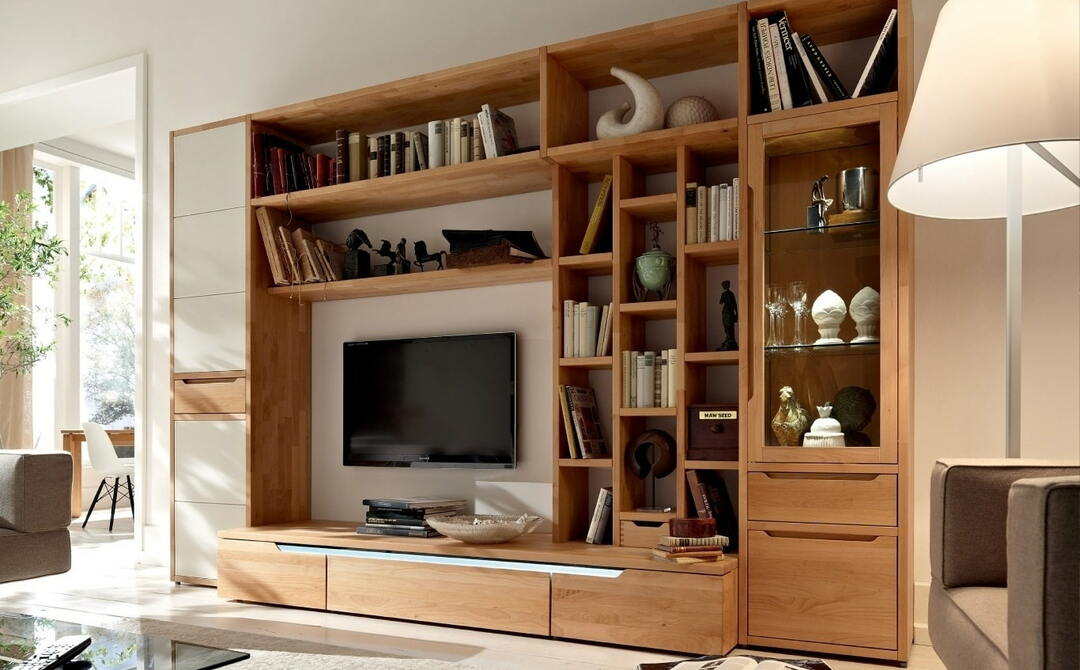
When choosing furniture, I want the interior items to be not only practical, but also beautiful.
The living room is a place whose main purpose is to receive guests, to gather at home. Therefore, the first and most important task of the wall is not to clutter up, but, on the contrary, to free up space, leaving enough space for movement. The design should be such as to hide all objects and things from prying eyes. The selection criteria are influenced by the following factors:
- The size of the room.
- Desired capacity and functionality.
- General style of the room.
- Build quality.

When starting to choose furniture for the living room, you need to subjectively follow what is most important.
A modern wall must be multifunctional in order to unload the room, replace a rack, wardrobe, bedside tables, chest of drawers. At the same time, do not steal precious centimeters of the area.
Varieties of walls
Bulky full-length wall models are a thing of the past. Furniture factories offer a wide assortment from budget series to premium class, develop custom-made projects. Depending on the purpose and filling with fittings, they are divided into several types.
- Suspended
The modules are located partially or completely on the walls.
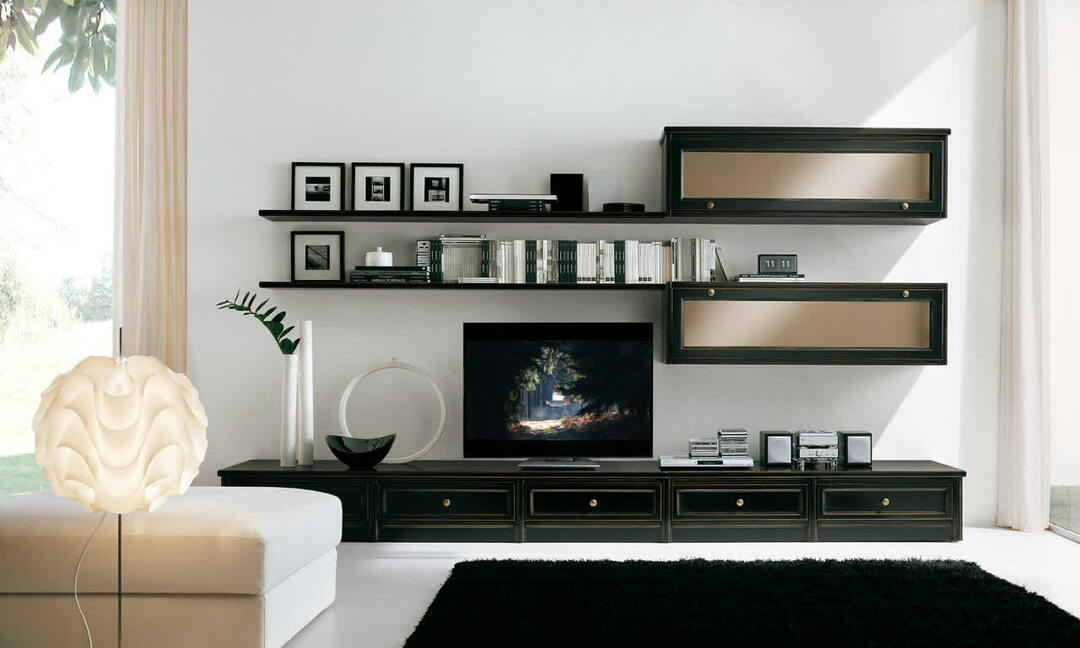
It is a fairly practical and comfortable option for the living room.
- Corner
More often they are equipped with a wardrobe for clothes, books or dishes. They can be part of a structure or free-standing elements.
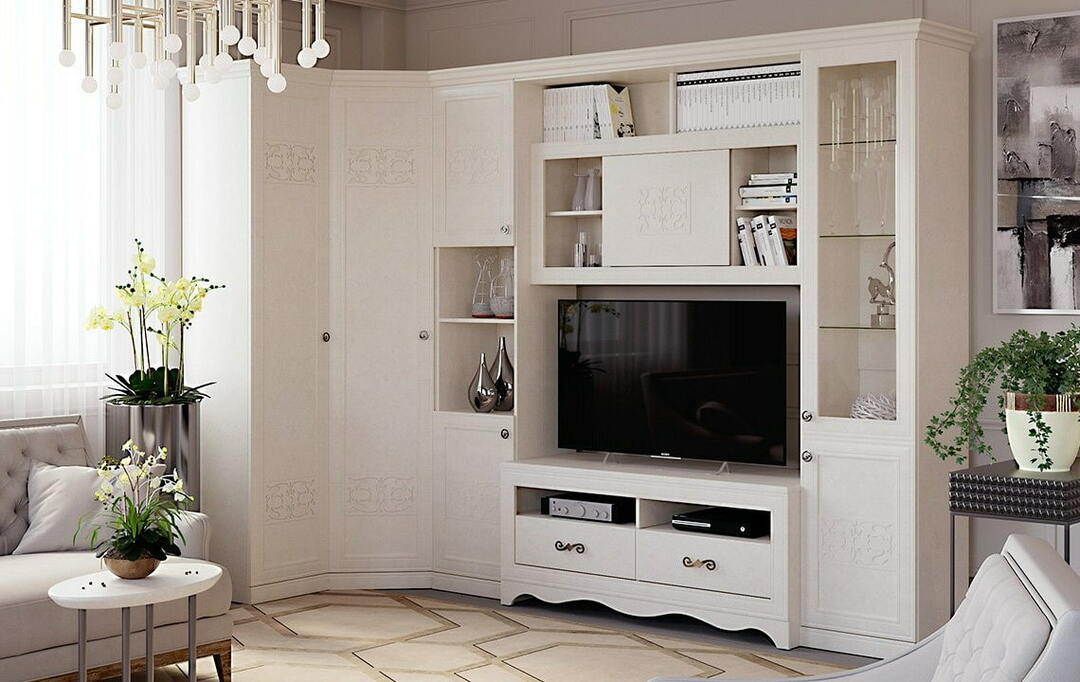
It is an irreplaceable solution for a hall, the dimensions of which do not provide the possibility of accommodating traditional models.
- Transformers
The optimal solution for small spaces. A spacious version with transforming parts (bed, desk) will significantly save space.
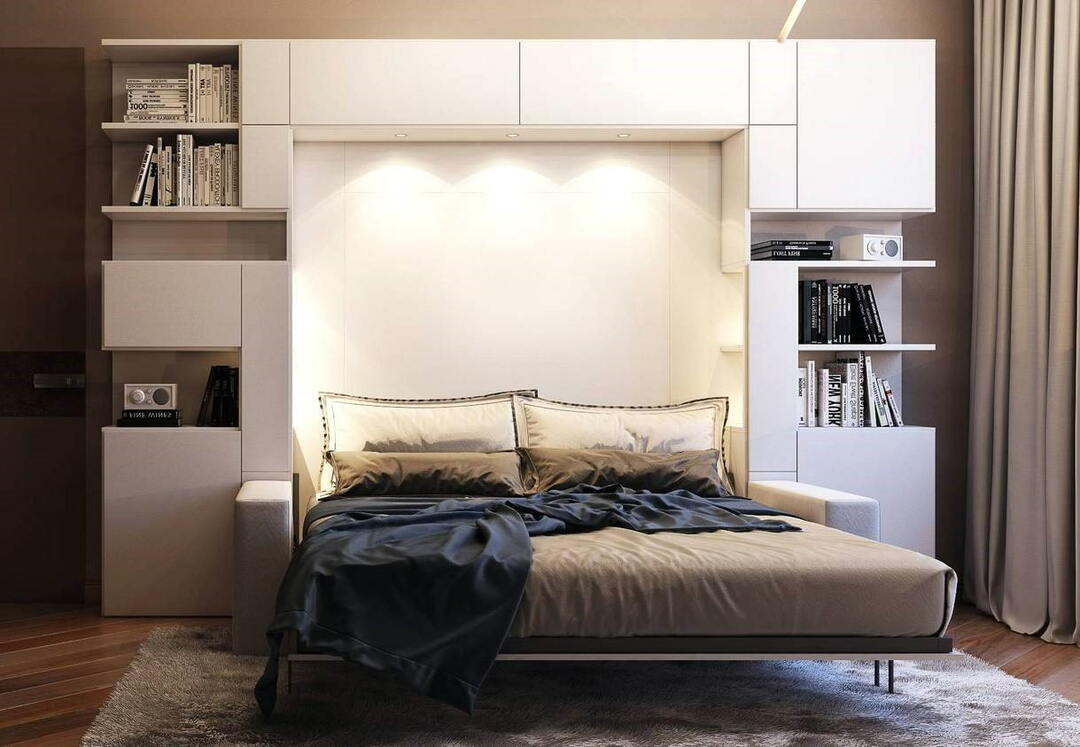
Such a model is combined with a wide variety of elements that are conveniently placed in one of the sections of this structure.
- Slide
Compact design, equipped with small cabinets, hanging shelves, pencil cases.
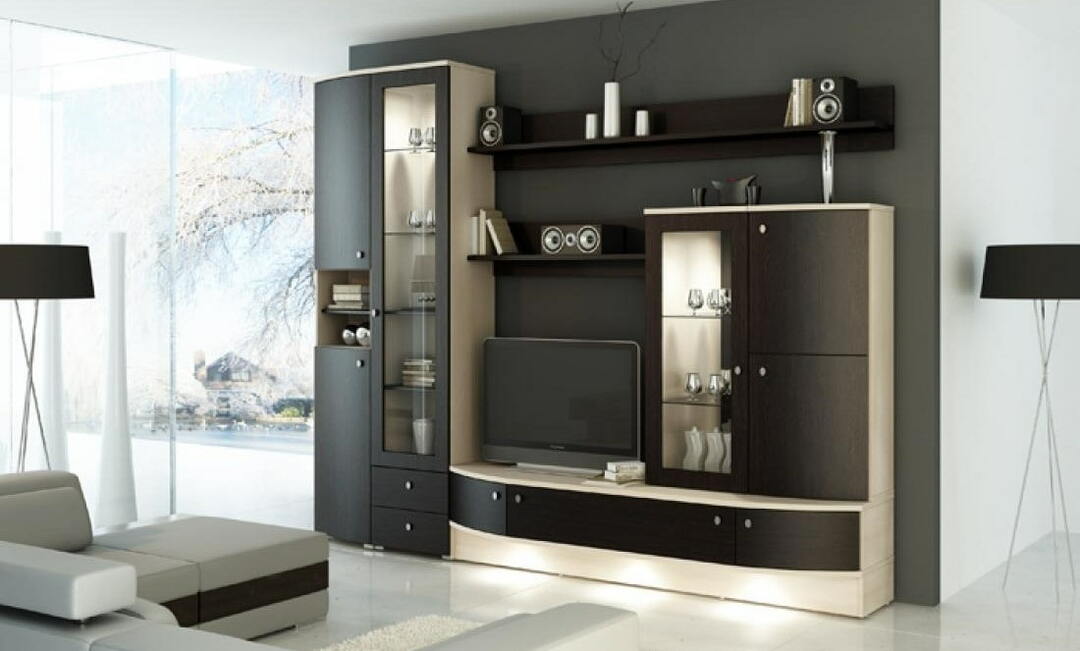
This design consists of compact parts and can be equipped with various small cabinets, pencil cases or wall-mounted shelves.
- Modular
The most practical option. Modules, if desired, can be easily swapped, supplemented with new ones.
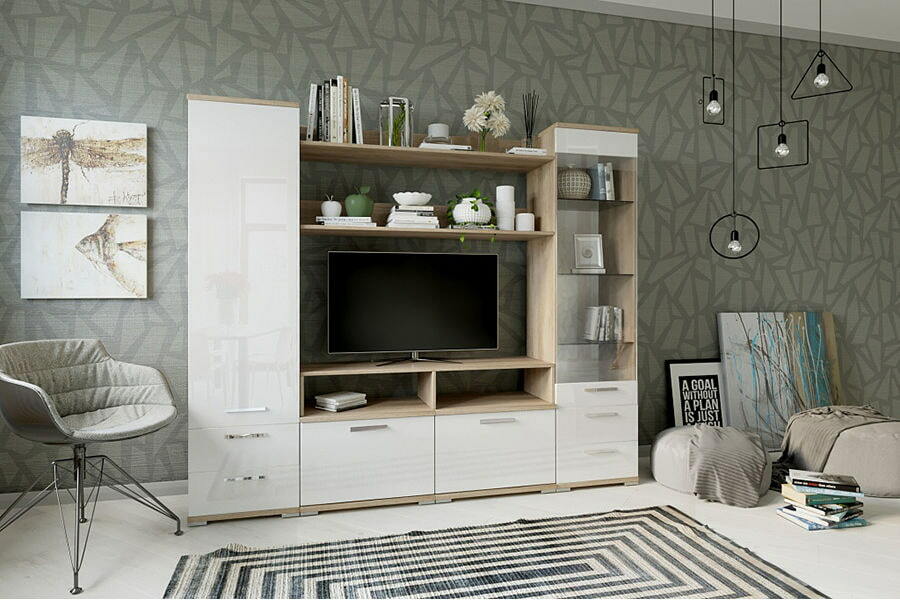
These products include several sections, each of which performs a specific function.
The difference between the walls in terms of functionality
When choosing furniture for the living room, it is worth starting from its purpose. If the apartment has a solid wardrobe, then there is no need for an additional segment to accommodate clothes. If you have a large number of books, you should think about purchasing sections with shelves for printed publications. There are also universal models that combine a wardrobe, a sideboard, a sideboard, etc. The main types of furniture structures, depending on functionality, include the following.
- Showcases for dishes
Walls for dishes in the living room are a great option for studio rooms combined with a dining room.
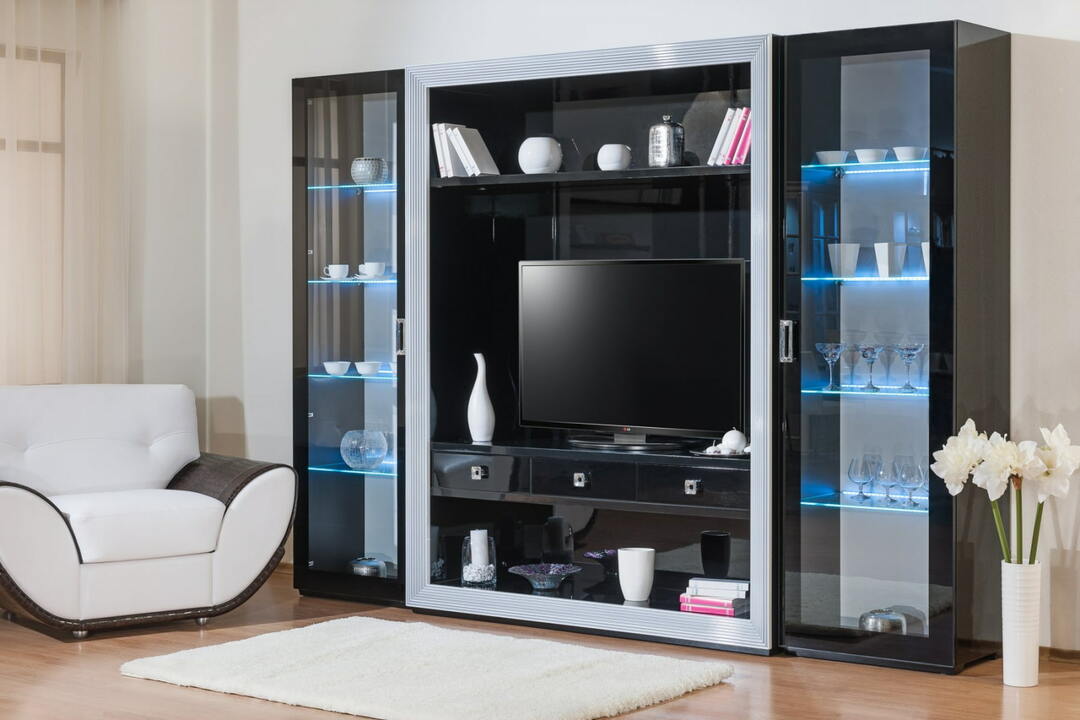
This furniture of closed or open type is distinguished by its special elitism and style.
- Library walls
They mainly consist of many shelves. They can have a stationary or pull-out table. Fits perfectly into the interior of the office.

A mini-wall will successfully fit into a small room, which includes long shelves, small cabinets or cabinets, perfect for placing books, paintings, souvenirs, photographs.
- Models with TV stand, speaker system, home theater stand
The length and depth of the case matter, depending on the size of the screen and the number of household appliances.
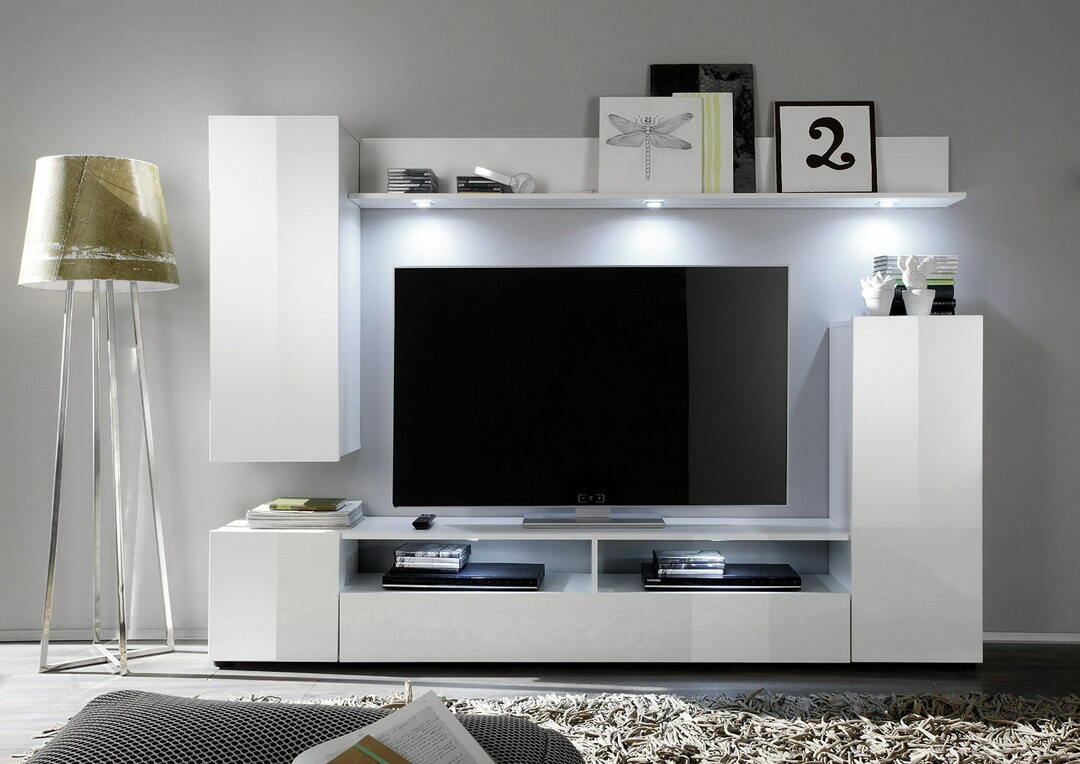
If you watch TV, then you need to take care of a large screen, which is mounted in the wall of the living room, where you can store various items and hide wires from equipment.
- With wardrobe
The best idea is a corner wardrobe, transforming walls for the living room. Variations differ from the general idea of the solid construction and the size of the room.
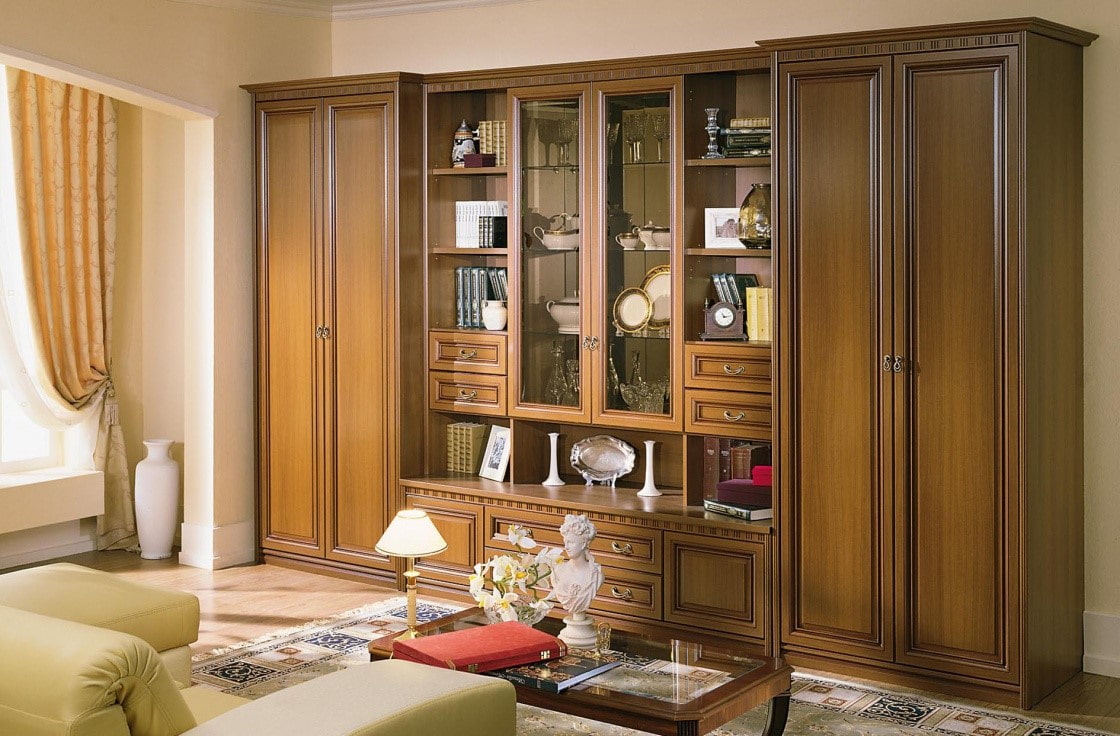
Products installed in the entire wall differ in rather impressive dimensions.
- Walls with mirror
Such models are at the peak of their popularity. Installed both inside and outside the structure. They can be supplemented with openwork elements, rhinestones, glass inserts.
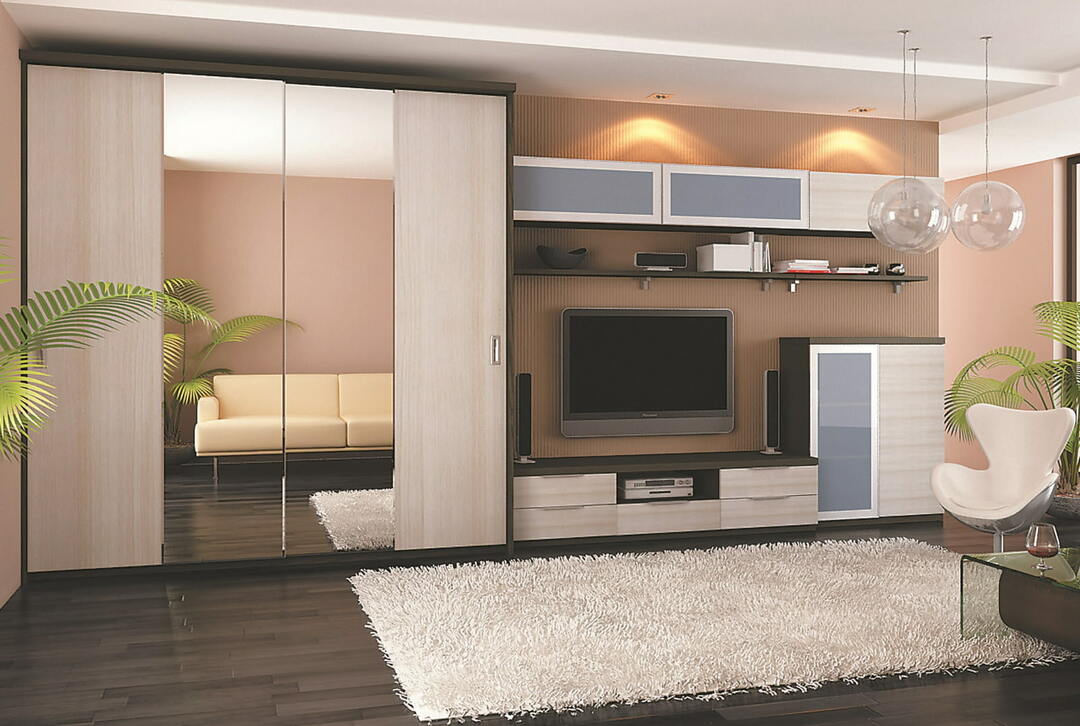
This combination will fill the room with weightlessness and light.
- Sideboard
Sideboards in the living room, unlike showcases, are additionally equipped with wooden floor or wall modules.
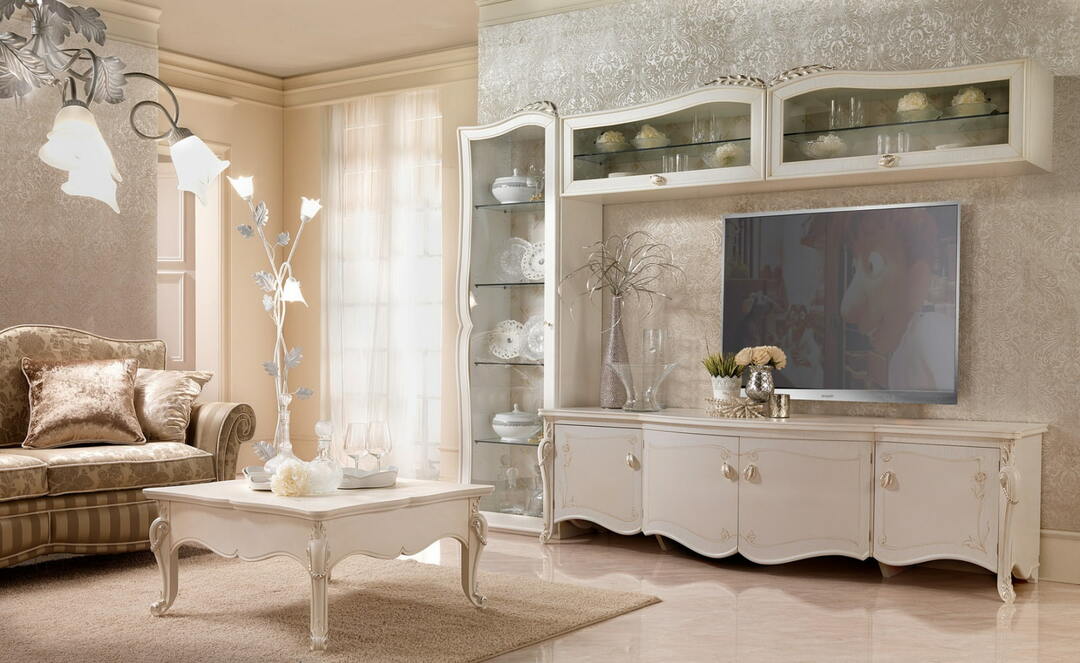
Option with glazed shelves for storing kitchen utensils, table linen.
The difference between the walls in terms of stylistic orientation
Having figured out the configuration of the main attribute of the guest room, you can start choosing a style. The future design must be in harmony with all decor elements: color scheme, other pieces of furniture. What to give preference to - the option with carved monograms and massive additions or the simplicity of the decor, to emphasize attention to the massiveness of the structure or dwell on airy light models made of plastic, glass and metal. In order not to get confused in all the diversity, it is important to pay attention to what style the product is made in, how it will fit into the general atmosphere of the room.
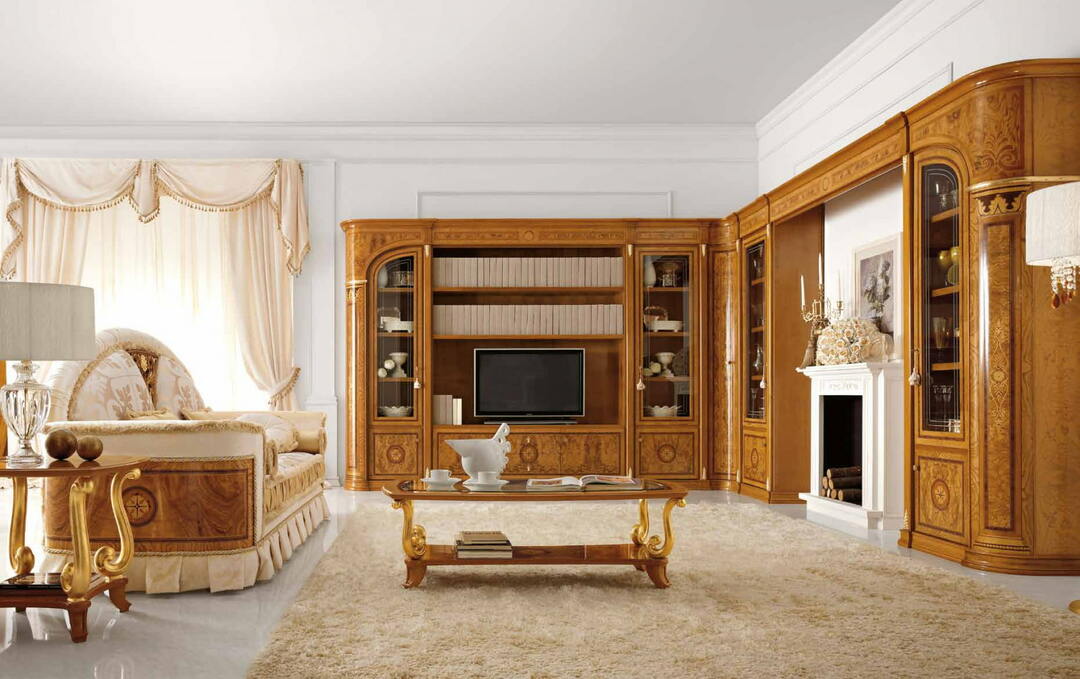
When purchasing such a furniture set, special attention is paid to materials, since the design and appearance of the structure and its quality with a service life depend on them.
- High-tech walls in the living room
Modules differ in number and size. They can be straight and angular, complemented by mirrors, finishing from metal attributes. Any color scheme.

Functional model, created on the principle of "nothing more".
- Modern style
The most common option. Retained convenience and good roominess. The content includes racks, a wardrobe, cabinets for equipment, swing modules, etc.
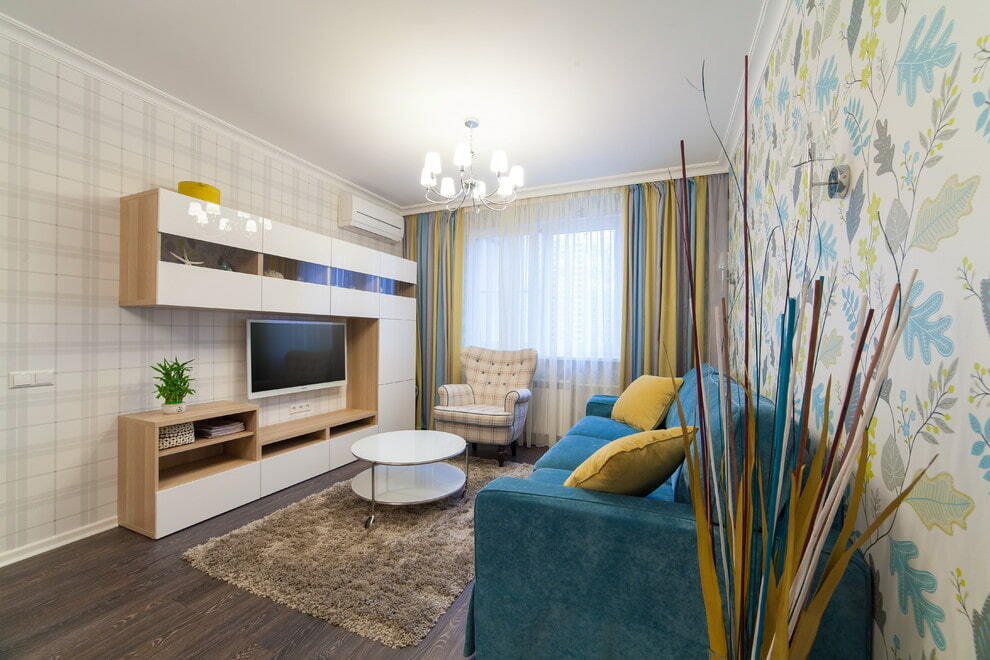
The models have become much more elegant and varied.
- Minimalism
Similar to hi-tech. The main differences are a small number of modules, monochrome colors, mirrors and glass shelves are presented in a minimal amount or are absent altogether.
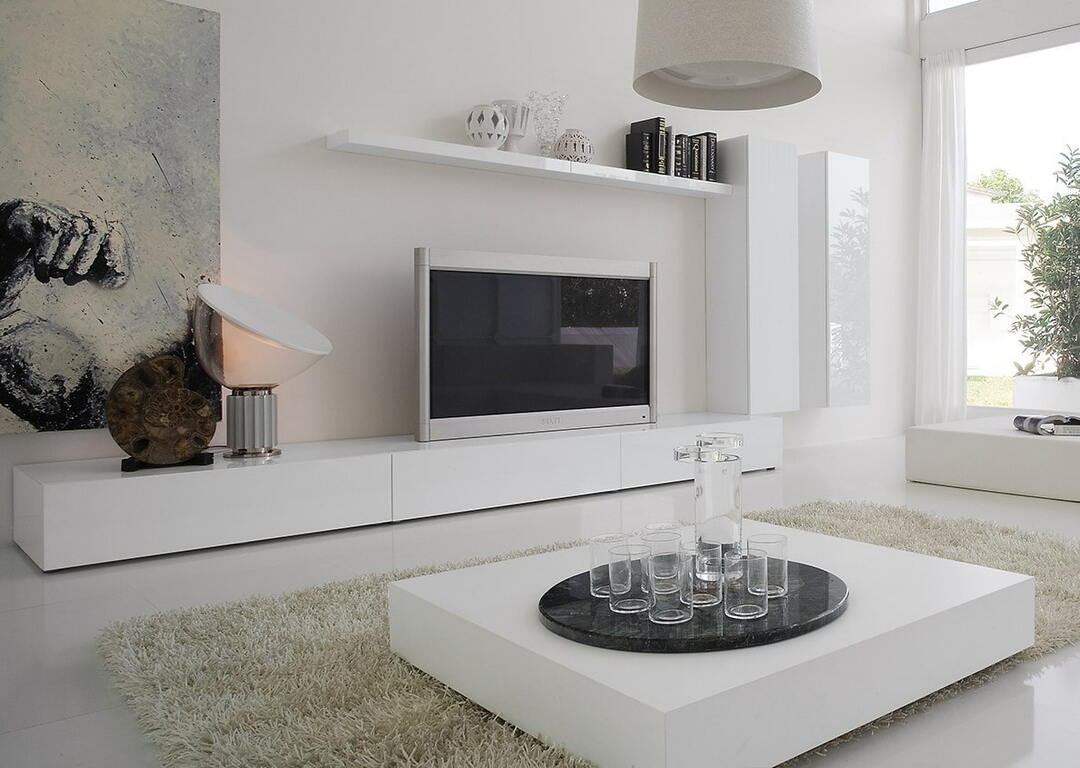
In every choice of furniture, user-friendliness is paramount.
Along with the most common styles, there are quite interesting options made in a non-standard direction. These include loft (stylized industrial), modern (an abundance of curved lines, rejection of symmetry).
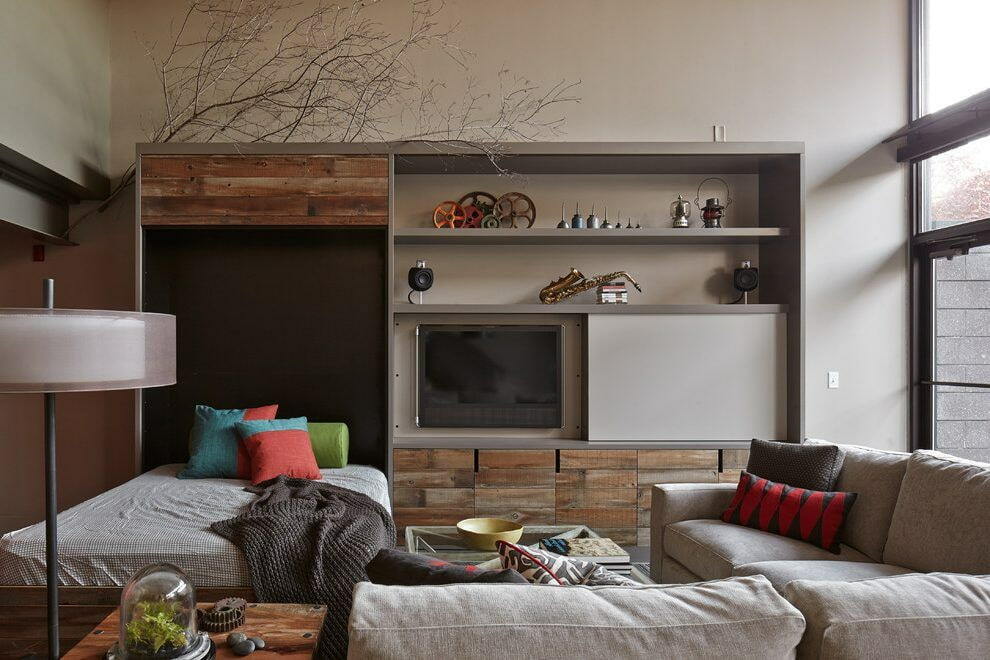
The modern interior is made of high-quality materials that can withstand loads that are beyond the limits of ordinary wood or plastic.
Color solutions
The color palette is matched to the overall design of the room. The light model fits harmoniously into the interior with a similar color scheme. A white classic wall in the living room will help create the most unique look. Will expand the space, make it lighter. The black version is no less popular. It looks strict and extravagant. Many people prefer colored walls. Please note that the use of more than 3 colors in the design of the room is unacceptable, otherwise the room will look tasteless and ridiculous.
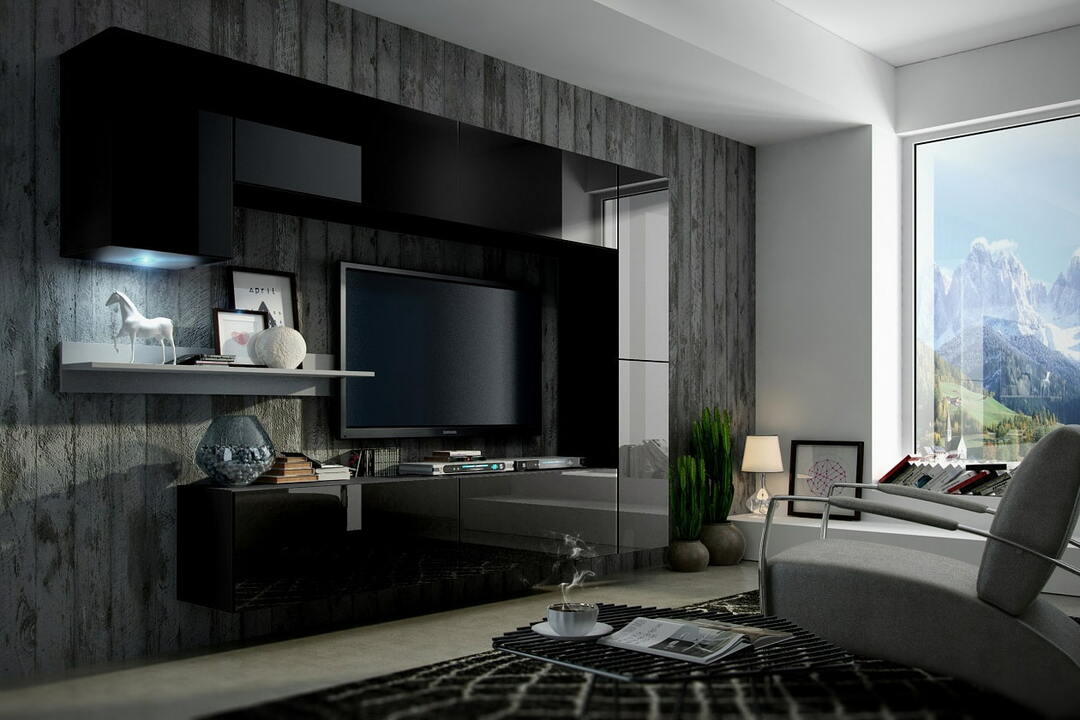
This option is not intended for heavy loads, but it is able to take in a lot of objects.
Selecting the wall size
The parameters are determined by the type of room and its shape. A wall with a mirror, a rotating bar, a radius wardrobe, suspended and stationary models to the very top of the room will perfectly fit into a small-sized living room. In a room with low ceilings, it is more appropriate to put a low wall. If the room is long and narrow, the modules cannot be placed along the entire length of the wall, so as not to create the effect of a "carriage", artificially narrowing the space.
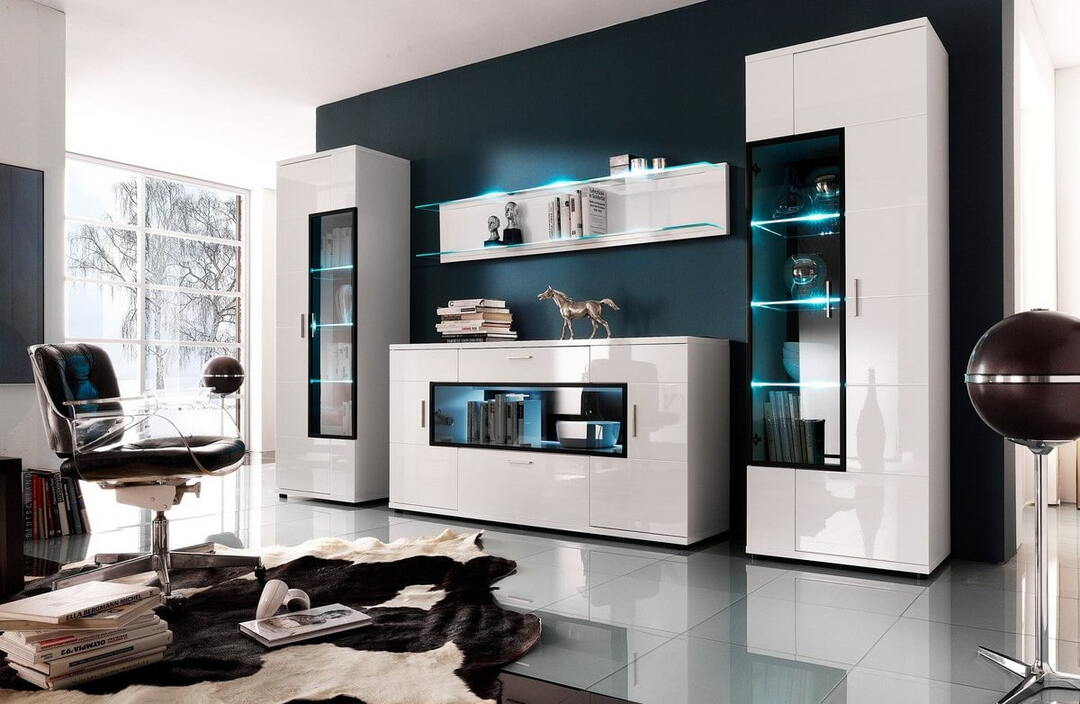
In spacious rooms, it is better to refuse compact models. Give preference to dimensional options that will look luxurious.
Manufacturing materials
The constructions are made of natural wood and its derivatives. The facades are finished with veneer and plastic, covered with paint and foil. Depending on the type of coating, there are matte or glossy, with patina, texture, milling.
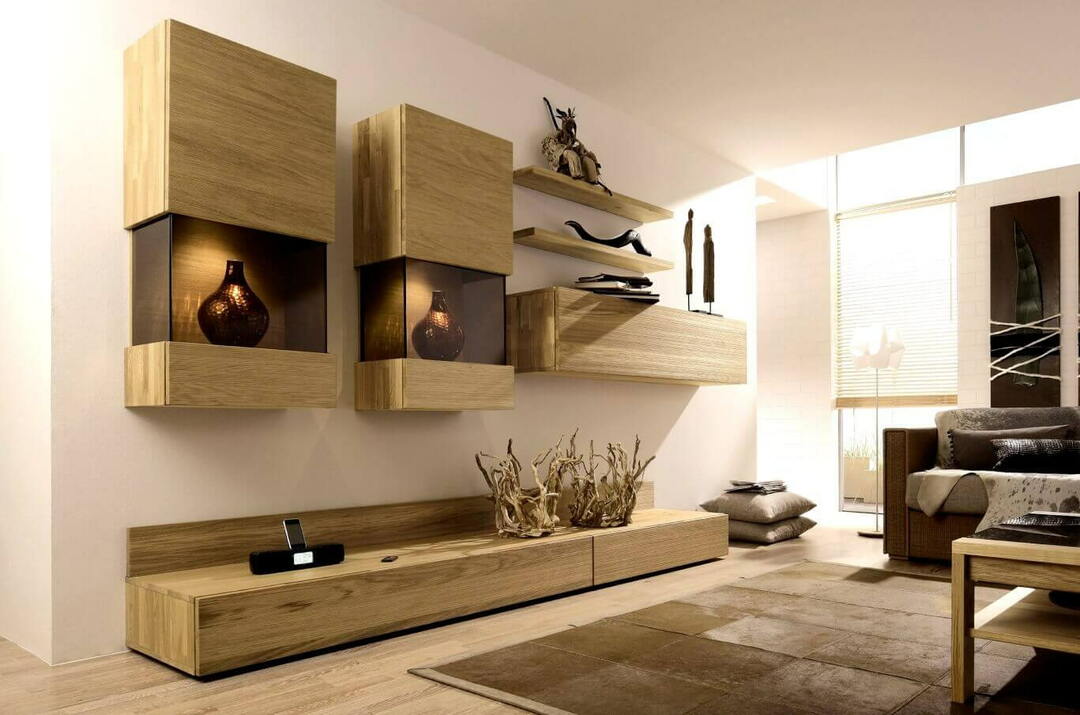
A variety of species are used: oak, pine, ash.
The body of the wall is mostly made of laminated chipboard. For the front part (facades), natural natural material, MDF, chipboard is suitable. The latter two types contain sawdust in combination with chemicals. Therefore, before purchasing a model made of such materials, you should request quality certificates from the manufacturer, since some may have unacceptable formaldehyde thresholds.
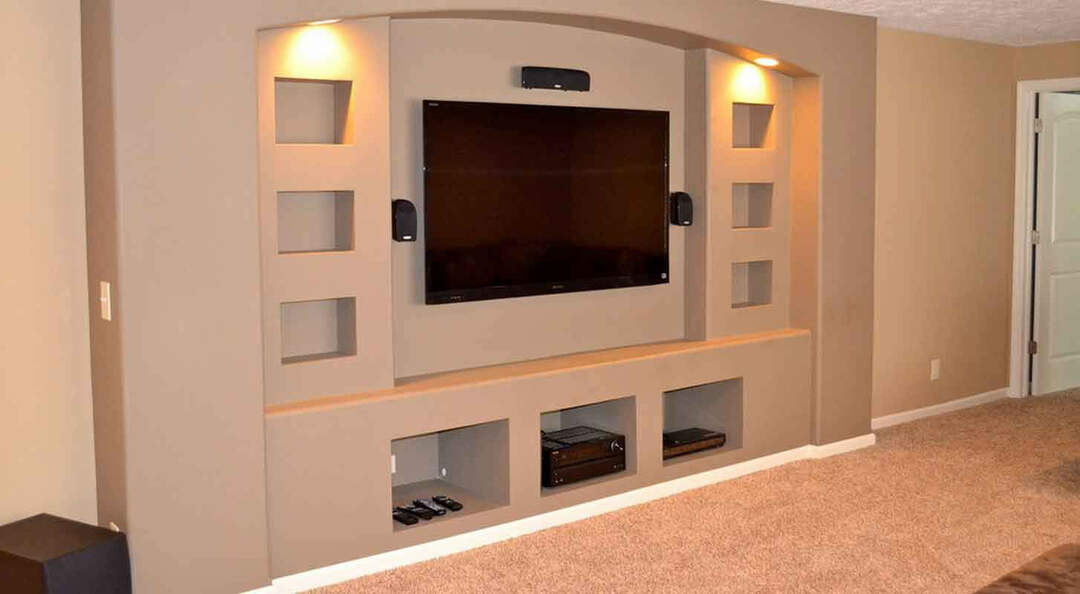
The cheapest option are drywall models. They are lightweight, but at the same time short-lived.
The most widespread for living rooms are MDF walls, supplemented with glass inserts, a metal frame.
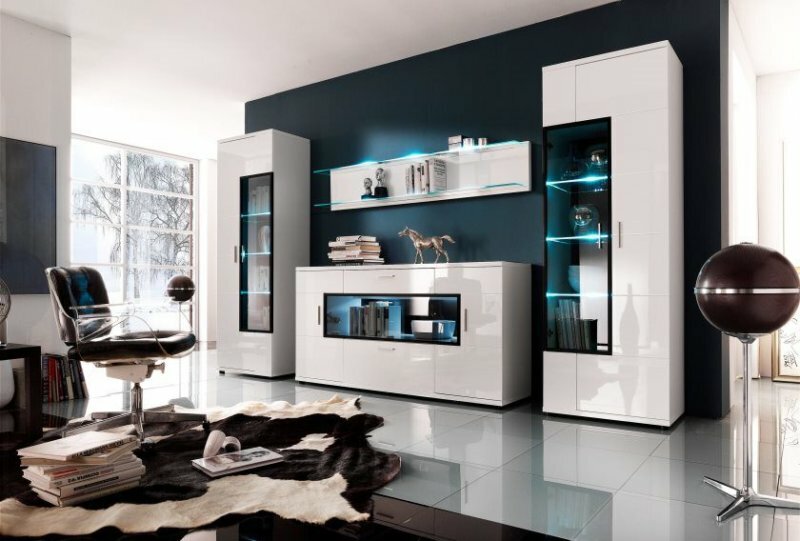
It is worth noting that lightweight and durable material is a much better choice than heavy one.
The use of modern technologies in the production of bases and components endows this type of furniture with many valuable qualities: ergonomics, elegance, versatility, compactness, practicality, makes it indispensable in modern the interior.
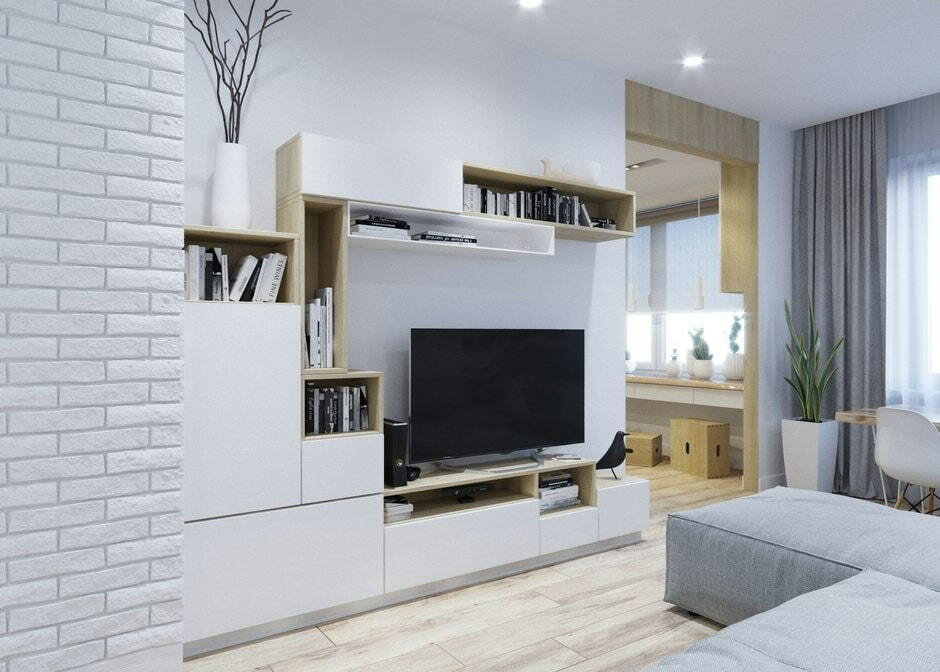
The wall in the living room, its correct location, well-chosen color, harmonious combination of decorative elements affect the functionality of the room, its practicality.
Original solutions, beautiful photos of wall models for the hall and living room are presented below.
